There's simply no denying the fact that we all are dependent on our mobile phones today. Mobile devices are everywhere and social media (coupled with mobile SEO) now plays a huge role in attracting new business.
- Confused about something? The mobile phone comes to our rescue!
- Want to use a search engine to find a nearby business online? Again the mobile phone — combined with local SEO — is the saving grace...and so on.
We still use desktop devices, of course, but we now depend on the internet and our mobile devices for our day-to-day needs. Isn't it somewhat obvious, then, what makes mobile SEO important?
The Rise of Mobile Devices...and Mobile SEO Optimization
In this regard, it's useful to understand the importance of mobile SEO. Mobile traffic now outpaces desktop search. You can't leave your desktop user behind, of course, but mobile SEO should be your primary focus.
Today you get maximum sales, traffic, leads, and conversions via mobile users scanning through your content. The rise of search engine optimization is an unavoidable fact because people are always on the go and things on their to-do list are being done on the go, typically on a mobile device.
The advantageous ranking of your content today largely depends on the mobile experience, leveraging local SEO, using social media as part of your digital marketing, and how well your website is optimized for mobile search.
Also, you have to keep mobile-first indexing in mind as this is an important part of mobile marketing. Consequently, mobile SEO is critically important. In this regard, you may need to consult with an SEO agency to make sure you are optimizing your content for mobile without leaving the desktop user behind. Otherwise, the user experience is likely to suffer and you're likely to lose the mobile user.
Listed below are some best practices for tweaking content for mobile SEO. As you consider investing in SEO services and building a mobile friendly site, keep in mind all the relevant factors that influence search engine optimization. These include the site's design, fast-loading content, user interface across mobile and desktop, and navigation. They all influence mobile SEO either directly or indirectly.
1. Prioritize page load speed.
In the age of fast internet speed, your website content cannot lag. Mobile users are notorious for demanding responsive design and a lightning-quick user experience. Your content must appear super fast on any device. If you aren't working on mobile optimization, your user experience is bound to suffer.
You must optimize images for mobile search, invest in responsive design for all your content, use the minimum amount of code, reduce the number of redirects, and use browser caching to its maximum effect. Of course, there are many more tasks that can increase page speed on a desktop and a mobile device and position your mobile site for search engine success.
- Related Article: Top 8 SEO Trends 2020 That You Should Know!
2. Let the Google "spiders" crawl all over your website.
Blocking Google search spiders can have a disastrous effect on your website. In all likelihood, the ranking of your website will suffer badly, both for your desktop user and mobile visitors.
There are some readily-available tools you can use such as Google Search Console and Google Analytics. When used correctly, these technical SEO tools (and others) can help identify and understand whether the spiders are reaching the important parts of your site or not. This leaves the window for desktop and mobile optimization improvement wide open.
3. Pay attention to your search engine result page (SERP) display.
Mobile search engine optimization requires attention to detail. When you add a number of microdata (tags) such as Schema.org and structured data to your mobile site, search engines can interpret or read them more accurately.
By working toward a mobile first index, you will boost your desktop SEO as well. This represents a true win-win SEO strategy.
Google search can also display your page in SERPs in a better way by facilitating the concentration of the rich snippets beneath the title of the page.
4. Mobile optimization holds the key to increased traffic.
Ask your dev team to make your website mobile-friendly and desktop compliant. Outdated plugins such as Flash might not be useful. It's always better to avoid using too many plugins. Pop-ups need to be avoided as well.
Instead, HTML5 represents a much better and more useful choice for your mobile website. For touch screen navigation on a mobile device, designing for the fat finger is always better. This means that the buttons must not be too small...or too big. Otherwise, scrolling your mobile page becomes tedious.
Less screen space means you have to reduce the length of titles, URLs, and meta-descriptions for the mobile version. What looks great on desktop might transform itself into a jumbled mess on mobile. However, you cannot compromise overall message quality as you tailor text for mobile use.
- Related Article: How to Grow Your Mobile App Through Content Marketing
5. Content upgrades and optimization are a neverending process.
Optimizing your content while keeping local search in mind is another important mobile SEO best practice. Start by standardizing your business name, address, phone number, the name of the city you are operating in, and the metadata of your site for mobile users.
Mobile first indexing combined with local SEO is sure to increase the impact of your search result. Invest in responsive design, accelerated mobile pages, and some solid social media support as part of your digital marketing strategy.
Launching a mobile site means little, of course, if you don't attract visitors. Your mobile friendly website needs to have support from a digital marketing plan. Should you decide to work with a SEO agency to help you get started, make sure your agreed-upon mobile SEO strategy provides for regular check-ups and fine-tuning.
The online search landscape is changing rapidly. Google still accounts for 75% of the global search traffic through desktop though. The first five search results get 67.6% of all the clicks. Long content was preferred last year with the average content length of top Google articles being 2,416 words. The average word count for a voice result page was pegged at 2,312 words. Local search is growing and so is image search and voice search. Mary Meeker’s 2019 Internet Trends Report warned that organic search results on mobile have shrunk by 9%!
The top SEO innovation trends for 2020 that we are going to talk about are guided by all these changes. Here are some of the ways how businesses can optimize their SEO efforts to get better page ranking and more traffic:
1. Multimedia Searches are making Google's SERPs Richer
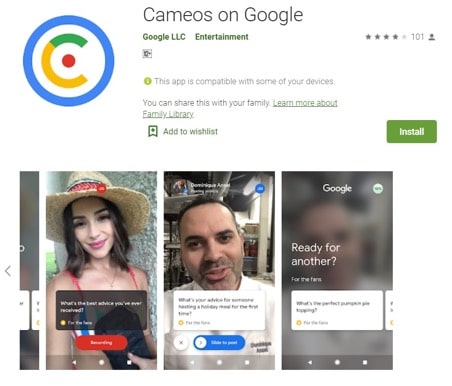
Cameos on Google is the new video-based Q&A app which allows people to answer questions about them. The app aims celebrities and public figures who answer the questions directly on Google. Then, there are 3D images, AR (Augmented Reality), and several other mini-apps that are pushing Google's search engine result pages (SERPs) towards a media-rich experience. Additionally, the Google algorithm is coming up with a holistic ranking system to consider all types of content.
Savvy use of 'structured data' and interactivity of custom-built applications can all give you a leverage on Google Search soon enough. High-quality content innovations that can attract and engage the audience across different search channels should be the focus of your SEO team this year. Also, the content you develop should cover images, videos, news articles, tweets, and experimental mini-apps being added to ever-growing Google's portfolio.
2. Voice Search is Growing
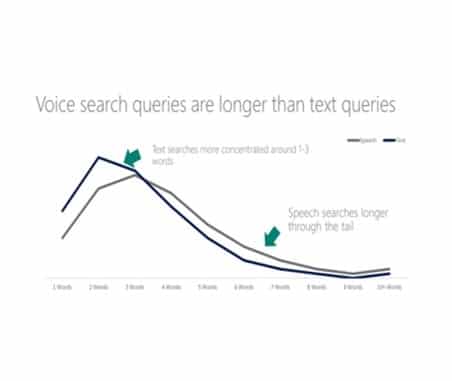
Source: www.campaignlive.co.uk
Typing a search query is not the preferred online search method anymore. With voice-enabled digital assistants and apps in vogue, 50% of users will soon be verbally asking questions to search engines using their smartphones (or other smart devices). More than 20% of voice search queries are triggered by a combination of only 25 words. These are:
| how | where | why | make | list |
| what | can | new | does | home |
| best | top | recipe | define | types |
| the | easy | good | free | do |
| is | when | homes | I | who |
Voice-based assistants pick up content that answers the search queries using these words first.
Voice Search SEO is all about optimizing content for long-tail queries that are likely to be spoken aloud. News articles, recipes, and content that uses FAQ markup do better on Google Assistant. Thus, local businesses should optimize their presence on Google My Business, and integrate long-tail queries with local search keywords.
28% of people who voice-search a business go on to call the business directly. Remember, consistency in answering the phone calls and direct messages can help local businesses to increase their customer base considerably.
[insert page='get-a-ringside-view-to-competitive-strategies-with-your-semrush-marketing-toolkit' display='single-related-article-02.php']
3. Intent-focused Content Optimization is Required
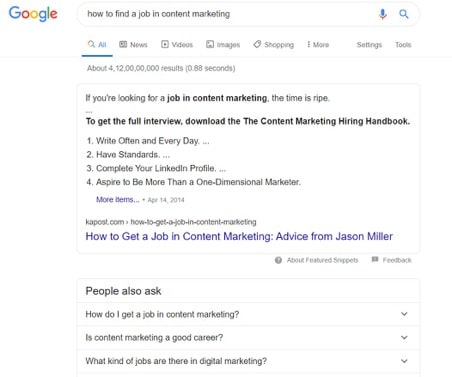
As Google algorithm advances, it gets better at understanding the intent of the searcher behind his or her search query. On-point and authoritative content that provides the specific information a user is looking for wins. This requires a clear and deep understanding of your target audience and pruning your existing content to provide the best and consolidated info to your visitors.
From an SEO and digital marketing perspective, it has become difficult for professionals to see the SERPs in the same way as consumers of their clients. Geo-restricted content, page trackers, and cookies make it difficult for them to have an accurate understanding of the current rankings at different locations. A VPN service helps SEO strategists to overcome this problem easily. A VPN (Virtual Private Network) masks the IP address of the user and encrypts their internet connection. Thus, users can access restricted content or see genuine SERPs of another country (or location). Lastly, SEO professionals can use their information to form a better content and digital marketing strategy for their clients.
4. Video Content is the New Text

6 out of 10 people preferred YouTube over TV in 2019. YouTube is also the second-largest search engine after Google. Online videos are popular with current Internet users, especially in younger generations. In SEO terms, strategic placement of video content on YouTube channels, Google Search, Google Images, and Google Discover is gaining priority.
Video is extremely powerful when it comes to strengthening your overall SEO strategy. Two main business goals of creating and sharing videos can be:
- to increase conversions, and
- to build links and get social shares.
Rich snippets on your landing pages can earn you backlinks and impress customers. Product videos go a long way in helping the customers feel more confident about a choice and purchasing it. Then, you can go for introductory or explainer videos can increase brand recognition and brand awareness. Using structured data is a good idea to promote your best content - even in videos.
[insert page='seo-in-2020-what-to-expect' display='single-related-article.php']
5. Brand Visibility and Brand Reputation should Always be the Priority
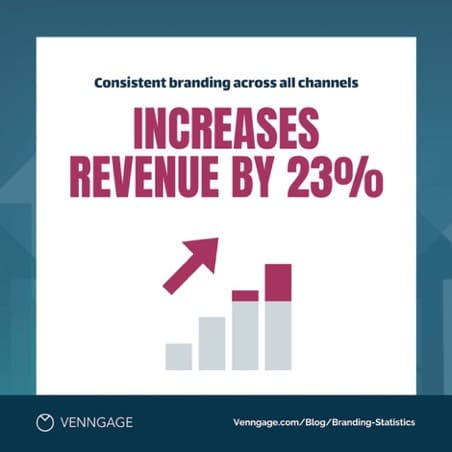
SEO is as much about branding as it is about creating and disseminating high-quality content. Earning a place in the Google and Bing Knowledge Graphs can have a tremendous impact on your rankings across multiple platforms, including Google Search, Bing Search, Google Images, and Google Discover.
Structured and linked data is the key to online branding and reputation management. Additionally, consistency in content regarding brand image and product info is required to achieve this. Lastly , instant responses on brand feedbacks, complaints, and product reviews are all part of modern SEO strategy.
6. Optimize Your Content for Queryless Search on Google Discover
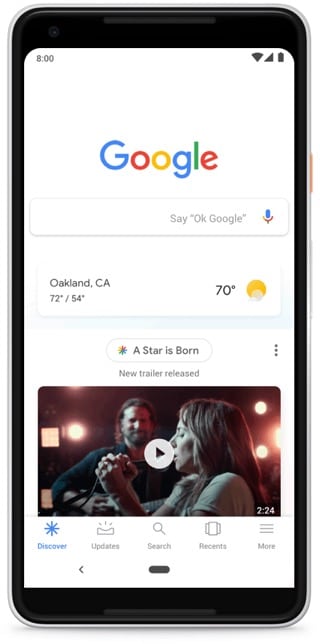
Gary Illyes said that Google’s mission is to organize information, make it universally accessible, and make it useful. Google Discover is opening a new stream of traffic to make this possible. Again, structured data, high-resolution images, and AMP support can help you optimize content for the new era.
AMP (Accelerated Mobile Pages) is a framework developed jointly by Google and Twitter. It simplifies the HTML and streamlines CSS rules to make mobile web experiences better and faster. Google Discover is an AI-driven content recommendation tool. It does not solely depend on search queries typed in by a user. Behind-the-scenes machine learning harvests data about users' behaviour, learn from it and uses it to suggest what content is relevant for a user at a specific point of time and location.
Curating your business entity on Google My Business, being present in the Google Knowledge Graph, and producing high-quality content that offers great user experience are some of the ways to make Google Discover for you. Copying articles from other websites and taking more than 2-3 seconds for the website to load are perfect ways to drop off the Discover grid.
[insert page='retargeting-choose-your-audience-connect-with-them-and-win-easily' display='single-related-article.php']
7. Use Structured Linked Knowledge Graph to Build Your Content
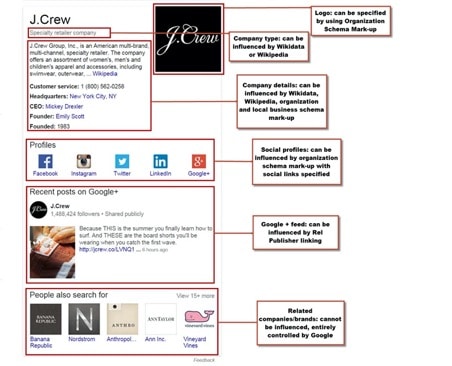
Once there were sitemaps to guide the Google crawlers where to find the relevant content. Now, structured data (or featured snippets from your best content) helps Google understand how your site is connected. It's time to develop a structured link graph and use schema markup to help the crawlers pick up one's content in an ultra-competitive landscape.
Structured data needs to be the building block of the content strategy today to improve user experience, to improve analytics, and to train new recommendation systems favorably.
[insert page='10-best-premium-seo-tools-to-boost-your-traffic-in-2020' display='single-related-article-02.php']
8. Natural Language Processing (NLP) and Machine Learning Require Content Optimization
NLP and Machine Learning trends are evolving. They require content innovations and use of simpler language which can be understood by machines easily.
This can be done by:
- improving structured data markup on your pages using public graphs like Wikidata and DBpedia,
- creating relevant links describing the topic for your audience,
- using semantically-rich metadata to direct content recommendation results to your site,
- using synonyms of keywords for smart redirections, and
- analyzing your competitors using NLP to track concepts that are driving Google SERPs.
In 2020 and beyond, it's important to stay up on new SEO trends to establish a long-term strategy to achieve business goals. We also recommend a technical SEO audit from time-to-time to hone your SEO plan and achieve results on a sustainable basis.
Are you looking at your website and wondering why all the time and effort you’re putting into it isn’t producing better site rankings? You have created quality content, scouted keywords, used title tags, and smart internal linking so, what is the problem?
Perhaps you aren’t using off-page SEO properly or not at all? If you’ve never heard of off-page search engine optimization, then you are not alone.
What Is Off-page Search Engine Optimization?
Most people either don’t know that off-page is vital to improving Google rankings or doesn’t know how to execute it.
Off-page SEO Examples
- Guest posting
- Leaving comments on other blogs
- Social media engagement
- Posting on forums
- Using videos from YouTube, Instagram, Twitter, etc.
Essentially, off-page SEO is background brand marketing behavior and activity that drives users to your site. On-page SEO involves what you do on your website.
On-page SEO Examples
- Writing engaging quality content
- Internal link building
- Metadata (title, description tags, keywords, etc.)
- Keyword research
- Page loading time
- Header selection
On-page SEO and off-page SEO determine Google rankings. If you and a competitor have even on-page rankings, then Google looks at off-page components.
Let’s dive deeper into the off-page SEO techniques you can use to market your brand in 2020.
1. Offer a Superior Service or Product
If you offer the best product or service then:
- Your brand, service and product reputation is positive
- Your site will gain more visits than your competitors
- Other sites will link to your website
- People will give you positive reviews
2. Customer Service
You should not neglect customer service because having an excellent product is irrelevant if your clients’ demands and concerns aren't addressed. If you don’t teach people who you are, then others will do it for you.
3. Focused Search Intent
An important aspect of off-page SEO is engaging your audience to create and share content that adds value. You can’t get positive social media engagement, sponsorships, reviews, or post partnerships without knowing why your audience seeks you out. Use AnswerthePublic.com or Google Autosuggest to discover how search intent attracts off-page SEO opportunities.
4. Engagement
Engage with your audience by commenting on blogs, forums, and discussion boards within your niche. Leave comments that are helpful and thoughtful to bring attention to your expertise. This will create brand recognition and provoke influencers, bloggers, editors to link to your site.
5. Be Active on Social Media
Monitor your social media accounts, respond promptly to questions, and give feedback. Fair and rational responses, even outside of your niche, will make you a valuable resource and increase brand awareness.
6. Create Influencer Partnerships
Social media is an excellent way for brands to get traffic, supporters, and customers. Gaining and nurturing relationships with high-profile influencers will open doors and deliver more site traffic and incoming links.
7. Build Relationships with Guest Posts
Off-page SEO partnerships are a valuable way to build relationships with publishers, editors, major brands, and influencers. Build your reputation as someone who delivers quality information and experiences, and approach guest post opportunities with a mutually beneficial mindset.
Implementing off-page SEO in addition to on-page SEO practices isn’t overwhelming if you add one method at a time. Master one technique then chose another, and eventually, you will reap the rewards of proper SEO strategies.
SEO trends change every passing year. 2017, for example, was all about authority profiles and indexed age. 2018 focused on mobile websites and voice search, intent optimization and user experience, instant answers and ease of use. 2019 saw the rise of mobile-first indexing, optimizing for Amazon searches, and blockchain technology. But while all kinds of trends arise from one year to the next, there’s always one constant: content.
Forbes has made a number of predictions about trends that will rule the SEO arena in 2020. They include organic and local SEO, PPC, and again, the constant: SEO and Blogging.
So the brouhaha about content being king is no joke. Forbes has called it the “indisputable backbone of your website SEO strategy.”
The good news? There are great ways to build a strong backbone to keep your website getting traffic!
The Audit

How do you know that your pages are being crawled? How do you ensure that they’re being indexed? Well, you can’t know, unless you perform an audit. It’s like being tasked with making a foul-smelling kitchen smell nice - but you don’t know where the smell is coming from. An audit is the technical foundation of professional SEO.
An SEO audit will tell you everything there is to know about how well your website is performing: its speed, how well it’s built, the quality of its code, and issues with content - such as duplicate content.
Audits take anywhere between 10 and 50 hours, mostly depending on the size of the website. Simply put: to create great content for your website, you’ll need to know if there are any issues with your content, especially duplicate content and plagiarism issues.
An audit will tell you if these exist.
A Word on Plagiarized Content

While it’s true that Larry Tesler took threeyears to invent copy-paste (from 1973 to 1976), it takes a lot less time to use it, which is why so many people plagiarize content.
Plagiarism isn’t just wrong and lazy - it’s illegal. You can be sued by the original content creator, and then you’ll have the added expense of reputation management on your shoulders. Besides, it’s not like plagiarized content adds value to your website.
Moreover, you’ll be known as a content thief and an untrustworthy business if you take this route. Audiences will never see you as reliable if you can’t even write your own content. It’s a comprehensively bad idea.
And if you think there are ways of going around the cut-and-paste kind of plagiarizing, you’re wrong. Patch writing might be rewriting in the crudest sense, but it’s still plagiarism. We can be sure that in the coming years, algorithms will be able to detect if you’re tweaking phrasing from a website and still using plagiarized content.
[insert page='top-10-best-online-plagiarism-checker-tools-and-websites' display='single-related-article-02.php']
A Word on Duplicate Content
Plagiarized content isn’t duplicate content. Duplicate content is original content from your own website that you’ve used over and over again on several of your pages - or several times on the same page.
Look at these examples. The fact that this is the UK’s “best” and “biggest” car leasing service is repeated multiple times. And this is only the home page. Also, declaring that you’re the best or the biggest in any arena is a bad idea altogether.
For example, the Google Quality Rater Guidelines don’t mention duplicate content - they mention copied content and state that websites with such content should be ranked the lowest. So while copied content is penalized and websites with such content blacklisted, duplicate content is treated differently.
It is still not a good idea to keep duplicating the same content. It makes you look lazy, it’s a turn-off for audiences, and it doesn’t earn you any brownie points with Google.
[insert page='seo-in-2020-what-to-expect' display='single-related-article.php']
Creating a Foundation: Researching the Ranking Options
If there’s one thing everyone knows for a fact about SEO, it’s this: using keywords is non-negotiable. Even the most uninformed layperson knows that SEO hinges upon keywords. But keywords are more complicated than you’d think.
One way of ensuring you’re using the highest-ranking keywords for your industry niche is by creating topic clusters for yourself, using a keyword tool to formulate a list of potential keywords, and group keywords together based on intent.
Create Topic Clusters: Include everything that your company does or provides. Whether it’s a main topic or a subtopic doesn’t matter. An easy way of doing this is to list each service you have.
Use a Keyword Tool: Use one of the many keyword tools available to check if the cluster of keywords you’ve selected is okay in terms of difficulty. The keyword tool will also provide variations for you. For your first page, filter out the results by going with the terms that are most relevant to your business.
Also use these results to formulate long-tail keywords. User intent is important here. Run a few Google searches to figure out how a user will use a cluster of relevant keywords. Shape your long-tail keywords around the most popular search entries.
Here’s an example. Let’s say you import Himalayan salt and sell it inside the U.S. When you write “how much does pink Himalayan salt cost” in the search bar on Google, Google will show you a number of potentially similar things people search for:
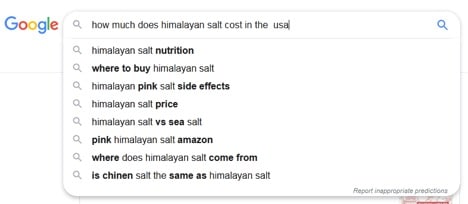
Further down, you’ll find something like this:
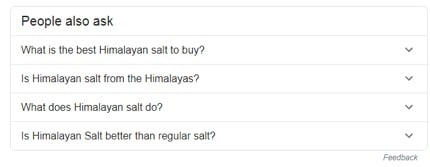
Targeting the “People Also Ask” section is a great way to optimize your content based on user intent. It gives you insights into what potential customers are most concerned about.
Group Them Together: Now that you have a list of potentially high-ranking keywords, long-tail keywords, and insight into customer intent, here’s the final step. Try to come up with one umbrella term. Not only do you now have a list of keywords that has depth, topic-wise, but they’re also designed to answer almost all related searches.
Creating Audience-Centric Content

For years now, SEO “junkies” have been creating “SEO content” that is little more than stuffing of keywords on one page. Here’s an example of what not to do when creating SEO content:
WE SELL HIMALAYAN SALT! It’s pink, and it’s HIMALAYAN! Himalayan salt is great for health! It’s exotic and rare. Our Himalayan salt is sold at the CHEAPEST RATES and is the BEST in the country. Believe us, you can buy Himalayan salt from us at the best rates and quickest delivery times. To buy Himalayan pink salt from us today, give us a call at 666-666-666!
Not only has this fictional Himalayan salt seller stuffed their content with their keyword, but they’ve also made sure to put it in bold in case anyone misses out on every single mention of it. This, to audiences, is a hallmark of bad SEO content.
Use Your Keyword Clusters: Your keyword and Google research will give you enough insight into what your audience is looking for. Creating content around these concerns is always a great idea.
Use the Zero Rank: Remember those “People Also Ask” tabs? That’s the zero rank on Google. If your content answers a particular question, your website will show up on this section, and audiences are likelier to visit it.
Answer Questions: Let’s take a look at the Himalayan salt search again. Here’s what you’re likely to see as the topmost results on your search:
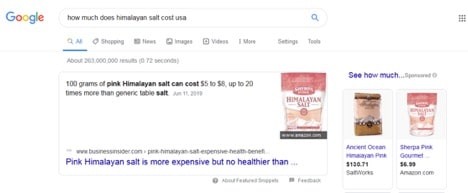
The topmost result on Google isn’t a link from a website - it’s an answer to a question people are asking. Business Insider answers that question in one of their articles, and hence, they show up as the topmost result - and the result most people will be clicking on.
Optimizing Content
You probably already know how important it is to optimize content. Without optimization, your website will have no connection with any search engines.
You won’t show up in any searches on any SERPs and nobody will visit your website. Without site visitors, you’ll have no conversions and subsequently no customers. It’s bad for business, so to speak.
Here are a few tips on getting optimization right:
- Use keywords sparingly, and cleverly. Your readers are clever. They know when you’re forcing keywords in just for the heck of it.
- Make sure the keywords are placed where they need to be placed and aren’t forced in.
- Include the keywords in the URL.
- Include the keyword in the very first paragraph that shows up on your website, as well as in the H1 and H3 tags.
- Use synonyms for keywords in subtitles to avoid repetition - but don’t make it look forced.
- Optimize content for those prized “People Also Ask” tabs.
Last, but Not the Least
This goes without saying, but create good content. As a rule of thumb, ensure that your content:
- is interesting, attention-grabbing, and not boring.
- is timeless, and won’t be Greek to readers five years from now.
- is informative and useful.
- is valuable.
- tells the reader something about your product or service.
- is well-written. To give an example, here’s what not to do:

Be very careful about your words and phrases. “Childcare juice” sounds suspiciously bad. You also don’t want to sound insensitive, politically incorrect, or simply mean at that.
- Be different and create unique CTAs. “Are you worried about xyz? XYZ Solutions Inc can solve your problems!” is so 2003. Let’s leave it there.
If you work in the field of long distance movers or offer any kind of moving services, one of the best ways to get more customers for your business is through strategic use of SEO and digital marketing technique. If you can get your company ranking well for search terms tailored to your brand there will be no stopping you.
Managing a moving business is quite unlike most other businesses in many ways. The business owners, the administrators who manage the back office logistics, and those who are right in the middle of all the action - those who are on the road doing the actual moving tasks, are required to work with a high level of accuracy and with clockwork precision to ensure smooth completion of the moving projects.
Also, the industry is extremely competitive and only the best can survive. That’s why it is important to not only provide truly efficient services but also make your potential customers aware that you are the best. This can be only done if your SEO efforts are channeled in the right direction.
Here are some proven ways of boosting your SEO efforts:
1. Google My Business (GMB) Listing
Your local SEO strategy must necessarily include the move to claim and verify your local business’ Google My Business (GMB) listing. By this simple step, you can boost the chances of getting visibility on Google’s Local Pack, Local Finder, and Google Maps. Your moving business can use this free listing on Google to include valuable information about your company including contact details, business hours, type of payment you prefer accepting and more.
When people look for local moving services, your GMB listing will appear in the searches. Apart from improving business potential, these local searches also go a long way in generating traffic and creating exposure for your business among newer customers. Your customer looking for a local moving service will most likely find https://www.mybekins.com/location/sarasota-fl-movers/ in their search if the company has got its GMB listing processes right.
2. Creating a Fully Functional Business Website
The design of your website will play a critical role in its success. The business website is an important element of your SEO. To ensure the full functionality of your website, you will have to take into consideration multiple aspects. These are:
- Website design
- Ease of navigation
- Page loading speed
- Ability to use on mobile devices
A. Website Design
A pleasing design will keep visitors hooked to your moving company website and that should be great news for your business prospects.
B. Navigation
The navigation aspect is equally important. Your customers must be able to find what they are looking for quickly and effortlessly. All elements of the website content including the heading and sub-headings must be categorized to help visitors find information quickly.
C. Page Loading
Next comes page loading speed which can make or break your business, literally. Your customers are busy people with little time to spare. They want the information to unfold quickly. A slow-loading page will quickly get discarded and they will move to a competitor who offers information faster through a well-designed and functional website. Make sure your website speed is optimal and always monitor it to keep it in the best performance mode.
D. Optimized for Mobile Devices
And of course, unless your website is optimized for mobile, you can forget about your company figuring in the top searches because a large percentage of them are conducted on mobile devices.
3. Choosing the Right Keywords
Your customers will find your moving company on the basis of the keywords you use in your website content. The ones you choose must be relevant to search query terms that they are most likely to use while looking for a good moving service. You can get this right by using some of the amazing keyword tools available for business websites.
[insert page='how-to-use-semrush-to-amplify-your-content-marketing' display='single-related-article-02.php']
4. Creating Qualitatively Superior Content
Your website content can play a key role in attracting the right visitors to your website. People are always looking for reliable and updated information on the web. If your website is able to provide quality information on the various aspects of a moving service that your audiences are keen to know, they will keep coming back for more thus boosting your SEO value.
By sharing the right information, your moving business can emerge as a reliable authority in the domain and that can do wonders to your long term business prospects.
When we talk about doing truly professional SEO work, one thing is certain - the amount of different ranking factors we have to worry about seem nigh limitless. Whether it is robots.txt files, sitemaps, content, or link building; there’s always work to be done. And, that’s not even mentioning the newer stuff, like featured snippets or voice searches. Among all that noise, however - it’s easy to forget that web hosting is important for SEO as well; which is what we’ll talk about here today!
High Uptime
As we evaluate whether a particular host is SEO-friendly, the first metric we need to look at is an uptime guarantee. A website’s uptime is the percentage of a certain period in which the site is accessible and online. The higher this percentage is, the smaller are the chances of visitors coming across your website only to realize that it is down. This is something that could seriously hurt your rankings; so be mindful of that, and remember that better web hosting companies offer higher uptime guarantees.
Of course, as you’re undoubtedly aware, good hosting isn’t always easy to come by at an agreeable price. But, in most cases, be aware of the fact that you simply haven’t looked hard enough; there are web hosting options that are not only inexpensive, but entirely free! You’ll find some great choices here, so take a look. You definitely want to choose carefully as not all the free options you encounter elsewhere online are as trustworthy.
Notably, you want to find hosts that offer you an uptime guarantee of 99.9%. Also, definitely beware of hosts that claim they can provide you with a 100% uptime guarantee. These aren’t serious companies at best, and fraudulent at worst; seeing as no one can give you a guarantee that nothing will ever go wrong, under any circumstances.
Server Location
While stuff like content marketing tactics is important to the success of an SEO campaign, we’re here to show you that the issue of web hosting could be even more crucial. Apart from the uptime guarantee you get, you should also take care to choose a host whose servers are in the right location.
The location of the servers may sometimes dictate the availability of your website to the users; thus increasing or diminishing your other SEO efforts. So, if you’re using any type of hosting that isn’t cloud-based (dedicated servers, VPS, or shared hosting plans), your website should ideally be situated on an actual, physical server, in a data center that’s found somewhere around the world.
If you’re choosing your hosting based on the physical location of the servers, you will want them as close to the largest portion of your target audience as possible. The math here is pretty simple - the longer the distance between the users and the server, the longer your website will take to load on their computers.
Specifically, in SEO terms, server location may seem suspicious to certain search engines. For instance, if your company operates somewhere but your servers are halfway over the globe, this could be considered a sign of nefarious dealings.
Multitude of Options
We all like our services to come with as many additional features as possible - and web hosting is no different in this regard. With that in mind, here are a couple of hosting features that are particularly SEO-friendly:
- Automatic backups: In the scenario where something goes wrong with your website, what you need is a solid backup service provided by your host so that you can get things back up and running as soon as possible.
- SSL: For ages now, HTTPS has been a solid ranking factor in major search engines. In case your website isn’t secure and in accordance with SSL, you should definitely take care of that as soon as possible. With that in mind, be certain that your hosting provider supports SSL, though most do so nowadays.
- Affordable package migration: We all want our websites to grow, but rapid growth entails the need for a new hosting package; one that reflects the increased traffic and can handle it with ease. If you need to switch to a dedicated server, you want your hosting provider to give you the option of doing so cheaply.
Solid Reviews
The Internet is a big place - and there are plenty of hosting providers out there. Even if you stick to all of the factors we’ve shown you above and take them into account, you could still end up with a couple of very similar hosting providers. In that situation, how should you pick the best, both in terms of SEO and in general?
Regardless of the hosting provider’s marketing claims, you need to be sure that they are true. The best way to do that is to peruse through their online reviews. However, this is where things get a bit complicated, as web hosting reviews need to be taken with a grain of salt more than the reviews for other services.
Think about it - if someone messes up your coffee order, you aren’t likely to care enough to write a scathing review on Yelp. But if you’re a website owner whose website has even the slightest downtime; you’re likely to get very mad - even if you are the one who chose the wrong hosting plan for your traffic.
Having said that; there is still a ton of useful information to be found in online reviews. Take a look at hosting plans like the ones we’ve linked to above, or others that are found on trustworthy top lists online.
Location, location, location. The long-standing real estate mantra is just as applicable for any company undertaking search and content marketing. Though Google delivers millions or billions of search results for most queries, approximately 75% of clicks go to the top three results. And if your brand doesn’t reach the first page, it might as well not exist.
Unfortunately, no silver bullet exists for quickly and automatically elevating your company’s virtual properties up search results. Improving search visibility requires persistent effort and revolves around the following foundational questions:
- Who is my target audience?
- What topics does my target audience care about?
- What keywords will they use to hunt for this information?
- How do those keywords relate to what I do? Particularly, what is my market differentiator in this area?
- How can I create content that is 10x better than what currently ranks supreme?
Say you have answered these questions. Your content is optimized, informative, and tailored to your audience’s needs and the way they search for content. But, you are still not cracking the coveted top three search results. You are not alone. This all-too-common result reflects the reality that more brands are investing in content creation and, frankly, they are getting better at it.
Frequently, content doesn’t rank because it attempts to encroach on competitive territory that brands have staked a claim with excellent content long ago. You may try to amplify your content through social media, another important tool to attract traffic. However, the likelihood that branded content, especially about a niche topic, achieves virality is approximately nil.
[bctt tweet="Brands often face a frustrating result: the content they have painstakingly crafted languishes with little to no traffic." username="relevance"]
Is that enough bad news?
Well, here's good news. There’s hope for your content, whether you posted it a day, a year ago, or have yet to create it. When you earn backlinks, also known as inbound links, it signals to search engines that your content is credible, valuable, and worthy of a top spot in rankings.
[insert page='10-best-premium-seo-tools-to-boost-your-traffic-in-2020' display='single-related-article-02.php']
Inbound links are key to a successful search marketing strategy for your company, and as Moz’s SEO/Marketing Flywheel demonstrates, creates a virtuous cycle of results.
Step 1: Rank well in search
Step 2: People find your content in search and believe it is valuable
Step 3: People link to your content
Step 4: Your content ranks even HIGHER because of the backlinks
Step 5: Repeat steps 1-4
Improving search rankings with original research
But what about Step 0, actually getting your web properties to rank well in search?
Inbound links are a proven means of signaling to search engines that you have created quality content that people seek. However, dedicating resources to securing inbound links to an individual piece of content does not scale. You will spend significant time and money supporting a single marketing asset, a dubious strategy in a content landscape that demands both quality and quantity. Exacerbating the problem is that many brands rightfully focus on niche topics that have limited linking opportunities, meaning you may face diminishing returns.
However, if you take the same strategy discussed for a single post and dedicated it to your ENTIRE website, you will command greater Domain Authority. Moz coined the term Domain Authority to express the result of an involved formula that quantifies how well a website will rank within search results. A significant component to Domain Authority is getting high-value inbound links from trustworthy sites.
Original research has time and again proven among the most effective ways to earn links from those within your industry, including influencers and trade publications, as well as those outside of it like mainstream media outlets.
Earning links from media and respected sites is a boon to your brand. Google and other search engines care less about how many links you have to your site and more about the reputation of those linking to you. A major news outlet or blog with a high Domain Authority linking to your site will do more than links from a dozen dusty blogs built on a 1997 Angelfire template.
“By producing insightful research, brands create a unique pitch that sets them apart from the tidal wave of self-centered features that journalists typically receive and ignore,” says David Chapman, CEO of a franchise PR agency. “The sharing of proprietary information about emerging industry trends, for example, entices publications to not only cover your story but to link back to the research. It’s a win-win for your public relations and search marketing.”
Getting started with original research

Before you start sending out surveys, you will need to put on your detective cap. Many brands, such as Lyft, RedFin, and Allstate, have used the insights and data that they have to provide unique insights for years. Instead of competing directly against brands that have already carved out a niche with original research, you can look for a new, unique angle that will interest media and your audience.
If you’re having trouble identifying a good angle for your brand research, consider examining disruptive trends that are having a wide-ranging impact. For example, how is your industry integrating the next wave of technology (virtual reality, artificial intelligence, or the Internet of things) into its offerings? How has the rise in veganism impacted menu offerings at restaurant chains? What effect have nap spaces in workplaces had on efficiency and employee well-being?
Consider researching an evergreen topic that you can update on a quarterly or annual basis. For example, the Content Marketing Institute has released an annual report every year since 2010. Common evergreen topics include analyses of the overall economic impact of a specific industry, trends in industry salaries, and the growth or decline of jobs in the industry.
[insert page='a-peek-into-the-top-25-content-marketing-tools-for-2020' display='single-related-article.php']
Doing the research
Once you’ve identified what research will resonate with media, industry stakeholders, and your target audience, you can begin collecting the data. Like the Lyft, RedFin, and Allstate examples mentioned previously, you can rely on your data, if you have a representative sample. Or, you can seek out the additional data using tools such as:
- Google Surveys: target specific demographics without needing their contact information
- Survey Monkey: leverage your existing contacts to uncover insights
If you are tight on time and man hours but have a sizeable budget, you can also hire a survey research firm. Their expertise and experience can be invaluable and may be worth the investment.
Don’t forget to reward the individuals providing the data, especially if you are leveraging your own contacts. Not only will it engender warm feelings toward your brand, it will compel more people to participate. If you can’t afford a $5 gift card to a coffeehouse for every participant, consider having a raffle for one big prize, such as a tablet or wearable.
Once you have the research...

1. Find what’s interesting
Now that you have the data, it’s time to analyze it, identify key findings, and contextualize it into exciting stories. Remember, numbers often don’t tell the whole story. If you find a significant shift within your industry, use your in-house expertise to explain why it is taking place and its potential long-term impact. Not only does this bring the story to life, it makes your brand more credible and opens up media opportunities.
2. Create the content
Before you start to put together a lengthy white paper summarizing your findings, you must weigh two factors equally:
- How does your audience prefer to consume content?
In some instances, brands will publish a single report that summarizes the findings of a national or international industry. For example, the Edelman Trust Barometer is an elegant piece of research that informs about multiple industries in countries around the world.
On the other hand, RedFin and Lyft often break their research down to trends in particular cities, garnering media attention from many local outlets. Outside of geography, you may determine it valuable to focus on a particular function or demographic.
The choice about the type of report you put together will come down to your data, the story, your audience, and your goals.
- What format lends best to the story you’re trying to tell?
No matter your audience, simply putting text on a page will not have the optimal impact. You should consider infographics and videos that will help amplify the content on social and attract the attention of reporters. (More about pitching reporters in a minute.)
Also, your brand will have invested significant resources into this research. You need to make it last. Repurpose your content by breaking down the report into blog posts that tackle one aspect of the report at a time. Pepper your social media profiles with facts and graphs throughout the year. In doing so, you will wring every cent of value out of your original research.
Using original research to pitch reporters

To maximize your efforts and to earn backlinks that enhance search visibility, put a PR pitch behind your outreach. Identify the standout storylines that the data reveals, and then pitch the publications that will reach one of your target audiences.
Don’t forget, pitching no longer means reaching out just to journalists and news outlets. Consider the influencers in your industry who will find this research compelling. They might post about your work directly or use it to inform something else they are working on. Either way, your brand gets exposure and an inbound link from a prominent site.
Whether a journalist or influencer, be sure to provide them with eye-catching visuals as well as a link to an overview page with the stats that matter most. The eye-catching visuals will help your pitch stand out and make the content they create more compelling. By creating an overview page, you give them a natural place to link to from their content.
These important links are where the magic happens – it is the secret sauce that makes everything taste better. Even one or two major pickups will drive a ton of traffic to your site and improve your website’s Domain Authority. Not only will your content rank better, so will your entire domain – including all of your past content pieces as well as all that you will produce in the future.
Soon enough, each piece of content you create will start at Step 1 of the SEO/marketing flywheel. And that’s when your content marketing and SEO initiatives will drive greater and greater bottom-line value for your organization.
However, remember that the marketing mountain has no peak. As you elevate your brand, you will find your competitors nipping at your heels to move into the spotlight (or top 3 ranking in Google results). Sustained success requires persistance and innovation. Continue to learn and tweak your approach, always on the look out for opportunities to improve and new angles to explore.
Finally, remember to celebrate your successes along the way. Successful content marketing is hard work, and every back link earned, each small win, can serve as energy to keep you going on this journey.
Retargeting, even though put into effect relatively recently, became one of the most desirable tools in digital marketing if you are looking to turn one-time visitors into loyal consumers or clients. It is designed for successful marketing campaigns especially if they are of larger scales and can be applied to many websites and online platforms.
If you know that just about 2 percent of people who visit your web store for the first time indeed convert to customers, it is easier to understand why retargeting means so much to the world of e-commerce. The strategy uses the information your visitors leave when they browse your website, to generate personal ads that will later remind them of what they were looking for.
Once they bounce from your website without buying anything, these reminders will pop up - much like a virtual Post-It note - so they can come back just by clicking on the ad. Through a well thought out marketing process, you can collect immense revenue in both product or service sales and website traffic.
Retargeting uses bits of code implemented into the very website to collect data and use it for commercial purposes. SEO gains a lot from the applicability of retargeting, as it gets much easier to optimize a website this way in a more organic way. This code most often comes in three popular formats: JavaScript tags, retargeting pixels (one of them being the coveted Facebook Pixel), and website code snippets. These are made to ensure the best results in the retargeting type of your choice.
In our detailed, visually stunning infographic down below, we want to inform you more about this rising star in the world of digital marketing. To catch your attention, we chose a couple of the most important ones. Let’s get into it.
Editor’s Choice: Retargeting In 2019, In Numbers
In the opinion of more than 46 percent of global marketing experts, retargeting is the single most underused and understated, yet auspicious tool in the industry of digital marketing.
Just by applying retargeting and running it regularly, Instagram will have managed to collect more than 10 billion American dollars by the close of 2019.
There are a lot of smartphone apps that chose to follow Instagram in these terms, and their annual revenue in traffic and sales continues to rise by 63 percent on average. Those that do not see a rise of 43 percent at most.
[bctt tweet="SEO is largely influenced and benefitted by retargeting." username="relevance"]
Even though web optimization looks for a rather organic approach to gaining traffic, retargeting can be useful in terms of collected traffic and finding out what makes your website and products more appealing.
More than 12 percent of the marketing workforce picks retargeting as their favorite tool to attract customers and make them brand loyalists. Brand popularity is an extremely important asset, and these marketers choose to gain it through retargeting.
It is, however, not for everyone. Some 11 percent of surveyed consumers said they did not enjoy getting retargeted. 59 percent remained neutral, and about 30 percent said they did not mind getting retargeted.
There are five most applied types of retargeting, invented by marketers who had to think of ways to approach all people who use the internet. Not everyone can be retargeted through search and website visiting, but via social media and emails, too. Let’s brush over them.

Search Retargeting
Search Retargeting is the single most popular retargeting form, and it is what you first think of when someone mentions the term ‘retargeting’. Keywords and common phrases that are most often looked up are its main focus. Using these, retargeting generates ads based on previous searches, and presents them to potential customers.
SEO and SEM Retargeting
SEO and SEM Retargeting is also keyword-sensitive but remains focused on properly applying these keywords and seeing which ones are most likely to bring potential customers to your website or web store. Afterwards, through this, you get to see how you can bring the customers back more easily.
Email Retargeting
Email Retargeting is also an essential retargeting format, as it collects traffic info based on previously sent or received emails. Once you apply the most proper way of email retargeting, you can bring the customers back through emails too.
[insert page='10-best-premium-seo-tools-to-boost-your-traffic-in-2020' display='single-related-article.php']
Site Retargeting
Site Retargeting focuses on people who are already on your web store or website and is a bit trickier. Namely, the main task of this retargeting model is to figure out what your potential customers want based on their activity when browsing your website. Some of the best tools to choose here include dynamic subscription, upsell, and product recommenders, as they make the job much easier.
Engagement Retargeting
Last but not least, Engagement Retargeting is another retargeting model that is most commonly applied to web pages using video and flash format. Facebook is famously using the model to retarget based on its users’ engagement in likes, shares, and comments, creating audiences of customers for specific products and services.
Overall, a good piece of advice is - do not just consider using retargeting for your business or brand but go ahead and start using it as soon as possible. The method is rapidly gaining momentum and can bring you and your products or services to the very top in your industry. Stay as informed as possible, as retargeting will most certainly become a trend in digital marketing. That said, let’s read along.
SEO may not be very old, but it’s one of the fastest-growing businesses in today’s world. Traveling at the speed of Google, according to the stats, almost 144,000 domains had been sold every single day in 2018. Even looking at half of it or even a quarter, for whoever participates in the SEO race, the competition is tricky.
If you are running a successful SEO agency, you may face many clients in the coming days, and if you keep it running smoothly, you need to accomplish two tasks:
- Getting work done by deadline
- Being better than competitors
However, being a profitable agency is not everyone’s cup of tea—it's hard work! From achieving old tasks to managing new ones with employees, planning for future growth is a tough job to do and a complicated problem to solve. There is not enough time in the day to make any errors. Therefore, we need to work smarter instead!
Here are some “business algorithms,” which will help you manage your workload and boost your business simultaneously.
Divide and Conquer
Not only for war, we can also use this universal formula in most of your daily business. First, you need to divide your workload. By organizing objectives into sections, you will distribute your work accordingly for employees.
Set Deadlines
When you have a lot of work pending, you need to be fast to beat competitors. If you don’t have deadlines set in place, you may suffer from procrastinating, so adhere to your deadlines.
Get Your Priorities Straight
There will always be some work pending, and you can’t complete everything on time. Organize your list accordingly, and realistically change goals.
Therefore, setting priorities is vital. Tasks that are both important and urgent must rise to the top of any to-do List. Keep in mind that too much work can overwhelm you and you can muddle up your list.
Keep an Eye on Accountability
Look at your competitors in the business like ships—the race is on, not just in speed but quality. Keeping your ship safe from sinking is as vital as winning the next race. Keep both marketing and SEO teams working together smoothly and closely with your goals and accountable for efficiency and deadlines.
Use Secret Agents
We know that James Bond 007 can’t help you, but you can outsource help for specific tasks. You can hire freelancers to reduce your workload. There is a sea of professional content writers, digital marketers, and link builders who can quickly build healthy links and rank your agency site in SERP so you will be efficiently completing unfinished work and getting new clients.
Encourage Open Communications
Encourage open communications with your employees, whether they are in-house or external. Interact in person or via Skype, phone calls, meetings, or team bonding events and connect with them. By doing this, they will feel like a part of the team and invested with the tasks given, which will produce new ideas and more efficient results within deadlines.
Consider all of these things to reduce the workload and stress from the employees’ shoulders and to scale your SEO agency to match today’s digital world norms.
Why should you bother about Premium SEO tools?
Isn't it insane; that every time Google comes up with an update in its Search Engine Algorithm and you have to put time and effort to modify the website accordingly. It’s a very complex task for anyone to optimize the site in such a short span of time and on top of that, doing it manually.
Also, you might be having the worst nightmare when you are handling hundreds or thousands of web pages without any assistance. Even if you are on the verge of optimizing a newly built website; in terms of SEO, it can be a boon when someone’s assistance delivers all the insights about competitive industry, recent trends, growth opportunities, etc. Here the ‘someone’ is an SEO tool.
Apart from the above-mentioned points, the biggest factor that can drive you to use an SEO tool is 'time'. This may sound a bit cliche but “Time is money”.
To win the race against time, the SEO tool is the nitro-boost you need..
Free SEO Tools: A Delusion
Before exploring SEO tools, here's one more phrase that may sound cliche: “there’s no such thing as a free lunch”.
The clear interpretation is that you won’t get access to all the features in the free version of the tool.
Even if you are trying with one such free tool, there is no guarantee about it solving your SEO related queries. You have to find a perfect match based on your SEO goals and for that, you need full access to the tool.
The Solution
The dilemma is whether we will get desired returns after spending on the SEO tool or not.
It’s quite natural and real to have such concern over it. There are certain handy solutions as well. The easiest one is to go for a TRIAL version. You can subscribe for a free trial of the tool as mostly all the tools provide this feature.
To say, I have a question. Wouldn't trying 50+ SEO tools to find the best that serves your agenda hinder your routine work and be nerve-wracking?
Makes sense, right?
Alternatively, you can take the help of review tutorials from SEO influencers or take-up a digital marketing course that provides training to clearly understand the benefits of the tools for the specific nature of the business.
Even for going after tutorials or subscribing to courses, you need money!
It’s like, for paying installments of car loan, you are taking another loan.
To solve this complexity, here are the 10 handpicked premium tools that can power up your SEO strategy. Also, here I have listed the tools based upon nature and needs that they best fit for, to speed up the process of selection.
1. Moz PRO | Technical SEO
Moz is a one of a kind tool which you can use for innumerable purposes, some of which are mentioned below:
- Rank tracking
- Link building
- Technical SEO
- Content optimization
- Keyword research
- On-page Optimization
- SEO audit etc..
Now, out of these use cases, I can personally recommend you to use it for “Technical SEO”. In simpler terms, Moz is the best when you are focussing on the “On-page Optimization” of your online portal.
You can audit your site regularly and in return, it will provide suggestions on what and where to implement changes. Moz uncovers hidden opportunities like:
- Optimal title
- Broken link
- Highlights content duplication issue
- Site crawling and indexing issue
Apart from fixing things, Moz will also recommend newer additions to SEO strategy.
Pricing
- Standard plan: The pricing starts at $99/month
- Medium plan: The pricing starts at $179/month
- Large plan: The pricing starts at $249/month
- Premium plan: The pricing starts at $599/month
*Moz also offers 30 days free trial
[insert page='discover-the-20-top-social-media-tools-brands-are-using-to-beat-the-competition' display='single-related-article-02.php']
2. Ahrefs | Backlink Analysis
Off-page SEO is a term that you won’t take seriously until and unless your on-page optimizations have stopped after generating enough growth. When you are thinking overall SEO strategy, there is a need to give equal importance to the ‘Off-Page Strategies’ as well.
When I talk about off-page SEO, backlinks are the most important traffic source for enhancing domain authority (DA) and sending positive signals to the crawler. There are prominent SEO tools that you can use to perform off-page SEO but above all the available SEO tools, one that I recommend is, Ahrefs. It has a set of features that work complementary to each other for boosting traffic. It can be the most ideal tool for exploring new backlink opportunities.
Some of the most important features include:
- Content Explorer: With content explorer, you can find out recent trending content with metrics (organic traffic, traffic value, social shares, etc.) about a particular topic. This data may help you to write your next LinkedIn article, answer to Quora’s question and deciding on which platform for posting.
Working of the feature?
You just have to enter the topic in the ‘textbox’ and it delivers infinite results of related online articles with just one click as shown below in the image.
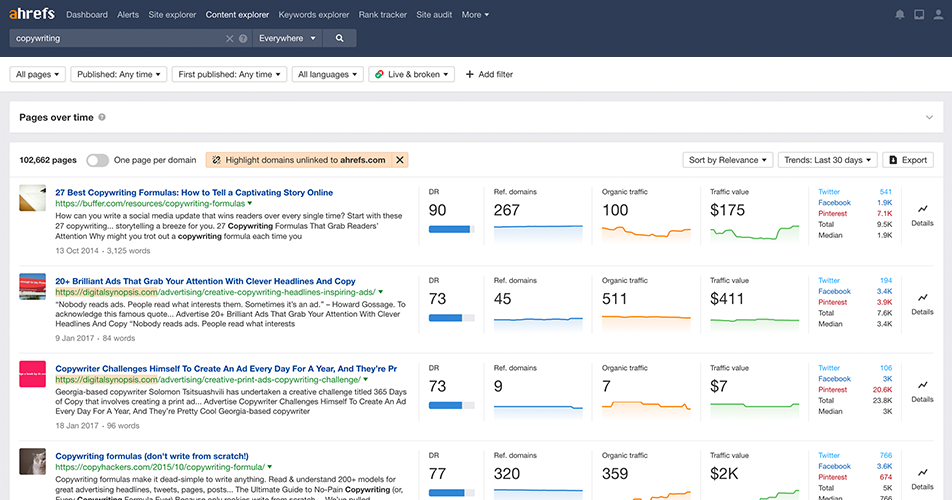
Image Source
- Backlink Checker - This feature is ideal for the start of your website and to check the market and network of your competitors. You can just type your competitor's domain name and fetch their backlink profile. Through this data, you can kick start your strategy by approaching these sites to get a backlink..
Pricing
- Lite plan: It will cost you around $99/month
- Standard plan: It will cost you around $179/month
- Advanced plan: It will cost you around $399/month
- Agency plan: It will cost you around $999/month
*It also offers 7 days trial for $7
3. Keywords Everywhere | (Keyword Research)
Keywords Everywhere is a tool for your keywords research requirement.
The most unique feature is the interface of it. You just have to install a chrome plugin and search relevant terms based on your requirements. The tool will automatically fetch related keywords data on the search results page itself.
So, compared to the keyword planner or any other tool, you don’t have to go through the tool and check the dashboard for all the data.
Here’s the catch, to get keyword search volume and CPC (Cost per click) data along with keywords data they’ve just started a paid subscription.
Pricing
The pricing is based on considering keywords limit as credit where 1 credit = 1 keyword
- 100,000 credits = $10
- 500,000 credits = $50
- 1 million credits = $100
- 2 million credits = $200
- 5 million credits = $500
- 10 million credits = $1000
[insert page='top-10-best-online-plagiarism-checker-tools-and-websites' display='single-related-article.php']
4. SEOmonitor | Rank Tracking
SEOmonitor has all the features from identifying lead to conversion tracking. The most important and underrated feature is “Rank tracking”.
Here, rank tracking just not meant to track search engine rank but more than that it can track the following metrics:
Search reputation tracking
For PR agencies, this small tool can work like magic and it manages the online reputation of a brand.
Keyword Tracking
We often ignore this feature and tend to focus on the research part. This feature will tell you the historical data about a particular keyword from CPC to past search volume.
Featured Snippet Tracking
By enabling this feature, it can track changes in your “position zero” (featured snippet position) and provide results over search impressions.
Pricing
Pricing will vary depending upon a quantity of website and keywords requirements.
For 1 website and 300 keywords, pricing is €49/month
With further increase in website and keywords to track, the pricing will increase accordingly.
*Free trial is available for limited features.
5. BuzzStream | Link Building
When we are talking about off-page SEO, link building is one of the most complex tasks which require patience. Link building process involves diverse tactics like outreach, interaction, follow-ups and a win-win proposal for the exchange of resources.
It requires internal team collaboration and proper follow up cycle relating to managing external publications. Manually, this task can take months of your time while a tool can reduce it to a minimal level.
Buzzstream has 4 stages of link building with a great level of customisation.
1. Research: In this stage, you can find new outreach contacts with minimum time and create your contact list in a single click.
2. Email: You can manage conversation threads based on the segmentation of database and personalised messages.
3. Manage: You can manage your internal team by assigning tasks and follow-ups.
4. Report: You can generate reports on email effectiveness and team performance.
Pricing
- Starter plan: Pricing starts at $24/month
- Group plan: Pricing starts at $99/month
- Professional plan: Pricing starts at $299/month
- Custom plan: Pricing starts at $999/month
*Free trial is available for 14 days, after that $24/month
[insert page='10-must-have-content-marketing-apps-tools' display='single-related-article-02.php']
6. Buzzsumo | Content Research
You need ideas from drafting your next blog post to a new social media post.
Buzzsumo is providing you with a solution in this context. It offers features and small tools which can generate tons of ideas on your behalf by just specifying business requirements.
The feature you can’t miss:
Content Discovery: This feature works as an alternative to “google trends” with micro-level analysis. When you enter the topic, it can deliver related ideas with current trends. Apart from this, you can get details on trending topics from forums, social media and communities as well.
The “extra” features:
Find Influencers: Just finding ideas and writing a nice article won’t be enough when it comes to content promotion. This feature is ideal when you want to share your content on social media platforms and across communities. It can help you to identify, shortlist and approach ideal influencers based on your requirements. Depending on their power to reach, you can suggest to them what to share with their loyal fans.
Monitoring: This feature tracks all the social media platforms and website to keep you informed regarding new brand mentions, competitor updates, product news, etc. You can go through the notifications and plan the actions accordingly.
Pricing
- Pro plan: Pricing starts at $99/month
- Plus plan: Pricing starts at $179/month
- Large plan: Pricing starts at $299/month
- Enterprise plan: Pricing starts at $499+/month
*It also offers 7 days FREE trial.
7. Copywritely | Content Optimisation
If you passed through the research and writing phase means you won half of the battle.
Now, you need to sink your teeth into content optimization procedures. It involves technical checks on the SEO side and grammar on the other one. There is a common tendency between us about using one tool for grammar check and a separate one for SEO based optimisation. With Copywritely, you can perform both the tasks with ease.
Tools For Grammar Check:
- Plagiarism Checker
- Grammar Checker
- Readability Checker
- Word Counter
Tools For SEO Optimisation:
- Keyword Density Checker
- Keyword SERP Checker
- Article Rewriter
Pricing
- Personal plan: Pricing starts at $18/month
- Startup plan: Pricing starts at $45 (One time purchase)
- Company plan: Pricing starts at $35/month
- Enterprise plan: Pricing starts at $67/month
[insert page='get-a-ringside-view-to-competitive-strategies-with-your-semrush-marketing-toolkit' display='single-related-article.php']
8. vidIQ | Video SEO
Video as a channel will contribute 82% of internet traffic by 2020.
If I can go more in-depth regarding the video platform, then YouTube accounts for one-third of all internet users.
These stats can direct easily towards the importance of youtube in your video marketing strategy. For getting maximum out of youtube videos, you need to implement SEO strategies.
Even though YouTube SEO is not a buzzword, you must take it seriously when working on brand-related video optimization.
“YouTube SEO” is not a popular buzzword but need to take it seriously when working on brand-related video optimisation.
VidIQ tool has all the features which can enhance your youtube rankings leveraging SEO optimization.
Here is a glimpse of VidIQ features/tools that you can explore to reach #1 on YouTube SERP.
- Keyword Tools: Get targeted keywords for maximum reach
- Channel Audit Tool: Use this tool to optimise videos which started getting views
- Competitors Tool: Explore this tool to step ahead of competitors
- Trend Alerts: See what’s trending around your targeted region
- Facebook Syndication: It allows smooth integration with Facebook to share videos there for maximum views.
Pricing
- Basic plan: You can use it for FREE
- Pro plan: Pricing starts at $7.50/month
- Boost plan: Pricing starts at $39/month
- Enterprise plan: You have to request for a demo to check pricing details.
9. Bright Local | Local SEO
The bright local tool can be your ultimate automation support in local listing optimisation.
It offers below tools which can bring your local business profile to every user’s first preference:
1. Local SEO tools: By leveraging features such as tracking local SERP ranking, monitoring reviews & integrating Google My Business Insights, your local SEO profile improves gradually.
2. Google My Business Audit: With such an audit, you can track all the recent activities to boost local listing.
3. Citation Tracker: Identify new local directories, monitor and optimise existing citations to outrank competitors.
Pricing
- Single business plan: Pricing starts at $29/month
- Multi business plan: Pricing starts at $49/month
- SEO Pro plan: Pricing starts at $79/month
- Enterprise plan: Contact them for pricing
*14 days free trial possible.
[insert page='are-you-confusing-your-requirement-for-a-99-tool-with-a-999-seo-agency' display='single-related-article-02.php']
Bonus Tool
10. StoryBase
StoryBase is a tool for the generation of content ideas.
It works on collecting user search queries and imparting that knowledge to you for better insights. You can use this real-time data in terms of user questions, ideas, queries, etc. and identify new content opportunities.
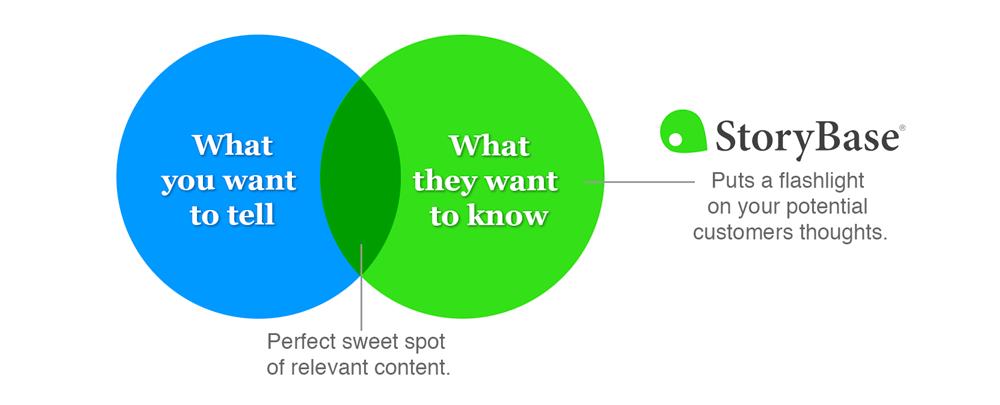
Image Source
Major Features Include:
- Content Ideas Generation: With having access to google search data of users, you can explore infinite ideas in terms of content generation. The content can be from blog post to podcast.
- Search Performance Measurement: There is a facility to integrate the tool with google search console and the possibility to track variation in clicks, impressions and rankings for all your web pages.
Pricing
- Personal Plan: Pricing starts at $49/month
- Premium Plan: Pricing starts at $129/month
- Enterprise Plan: Pricing starts at $299/month
*14-day FREE trial is available with each plan
Conclusion
I have listed the tools based on your SEO specific requirement.
Now, it’s not possible to list down every single tool for all the tasks. Similarly, it’s not possible to list down every SEO related task for which you will need the tool or maybe using it right now.
It will be great if you can comment on those “underrated” and never heard tools to make this list an ideal resource for the community.

